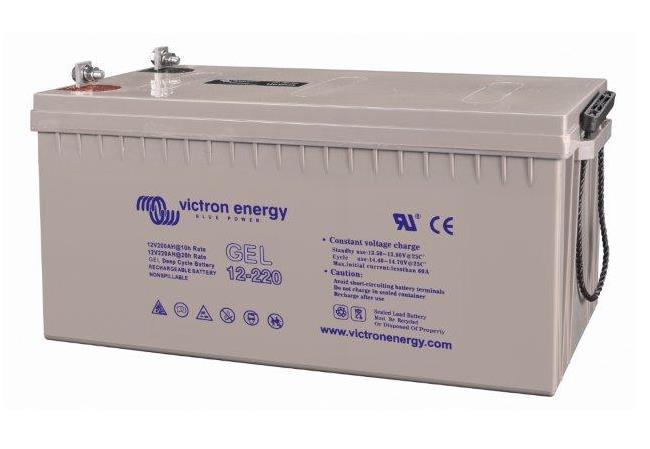Marine batteries are an essential component in many electronic devices used in our daily lives, such as RV, maritime, solar power, etc.
Certain tests and maintenance need to be performed regularly in order to keep them well functioning. Scroll down for info about the testing procedures now
How To Tell If A Deep Cycle Battery Is Bad?
What Is A Deep Cycle Battery?
Different from starter batteries, in marine batteries, a chemical reaction produces voltage and power as a form of energy storage. These batteries are designed to cycling (discharge & recharge) several times.

Compared to regular batteries, which deliver only a burst of energy for a short time, a deep cycle provides power at a steady rate over an extended time.
The charging rate of this type of battery is 80%, which means you’ll have to recharge it every time the power loss reaches eight parts of the battery capacity. Despite not being as powerful as a starter battery, this will provide a steady flow of electricity without presenting regular power problems.
To avoid damaging the battery’s cells, you should charge it when the battery reaches 40-45%.
The energy discharge for these types of batteries is minor compared to other types of batteries, with only 3-5% of energy leakage occurring in the recharging process.
There are two types of deep cycle batteries with the same basic operational principles, but the parts used are slightly different.
- Flooded Type: A flooded type battery requires a certain maintenance routine. Users should charge it properly whenever it drops below a certain level in order to keep it working at its best capacity.
- Sealed Type: The sealed type batteries are also known as maintenance-free batteries, although regular inspections are still recommended. As the name indicates, for these batteries, you don’t have to maintain the electrolyte level manually.
The difference between these two deep cycle batteries is insignificant. Users should make a reasonable choice based on their use, budget, and time for maintenance.
How To Test A Deep Cycle Battery?
There is a procedure to follow in order to do multimeter testing for deep cycle batteries. A pre-test is necessary for rating the battery’s current condition.
A battery load tester or DC voltage tester is also required for measuring the storage of electrolytes left in the battery. A recommended tool to use is a 12-volt digital multimeter tester.
Before beginning a pre-check, you need to fully charge your battery. Most deep cycle batteries will be fully charged at around 12.7V.
The voltage will decrease as the energy is depleted over time. At a 50% level, the voltage reading should show around 12.2V and 11.9V when at 20% remaining charge.
When the battery shows a deep discharge, you should rest it for 1-2 hours before trying again. If it does not improve, then look for other possible causes such as:
Malformed battery case: When the outer shell of the battery case is not in the regular shape or shows signs of damage, the battery internal may be malformed. You should stop using dead cells immediately and follow the disposal instructions for removal and replacement.
Broken terminal or impaired: The battery terminal plays an important role in protecting the battery connection ports. When damaged, this part can lead to chemical or electrical exposure, causing fire or detonation.
When the damage is noticeable, the bad battery should be replaced immediately.
Color altering: A change in the color of the battery or the case is a warning. It indicates a possible internal leakage or damage to the external case. The battery needs to be scrapped and replaced.
How To Maintain Your Deep Cycle Batteries?

Procedures in Maintaining Your Deep Cycle Batteries?
Checking your battery regularly will extend periods of the battery’s life circuits and its optimum performance. A periodic monthly inspection at an automotive shop is an important preventive maintenance procedure.
Below are a few important aspects you should take into consideration when maintaining it:
- Fully charge your battery voltage before its first use. This will help the battery perform better afterward, increasing its life circuits and durability.
- Protect the battery equipment and keep them intact in the energy storage or avoid loose terminal and battery failure.
- Regular cleaning of rust and dirt from the battery charger and battery bank is advisable. It helps a clear connection and keeps stains away from the internal part, protecting the chemical liquid and strengthening the case over time.
- For environmental safety and better storage, you can try to replace with green energy sources such as smaller-sized inverters, water turbines, wind turbines, solar panels, etc.
- Sulfation is also a common cause for the sulfated battery to stop holding a charge. You should not leave a dead battery on for too long while it’s still connected to your device.
- Sulfation occurs when the sulfur in the electrolyte reacts with the lead in the electrodes. This reaction produces lead sulfate, which coats the electrodes and prevents the chemical reaction from taking place.
- Extreme temperatures can substantially affect the battery’s performance and charging.
Low temperatures reduce the battery’s capacity and retard charging, while high temperatures lead to an increase in water usage, which can result in overcharging, damaging the battery plate, bank, case, and shortening its lifespan.
It’s best to keep them in a cool and dry environment.
How To Keep Your Safety When Working With Deep Cycle Batteries?
A battery is a device that stores chemical energy and converts it to electrical energy; it must therefore be handled cautiously. Below are some general safety precautions:
- Protective gear and gloves are a must. Sulfuric acid is included in the electrolyte of the lead-acid accumulator, which can burn the skin.
If you directly contact the battery electrolyte, wash & clean the area affected by the water level and seek medical support immediately.
- Eliminate potential sources of flames or sparks. When charging, these produce oxygen gases & hydrogen from electrolytes. A small flame or spark is capable of igniting these gases and causing the explosion of battery.
- Keep a neutralizing solution nearby in case of an acid leak or overflow. Baking soda or water is a good mixture to neutralize the sulfuric acid within the electrolyte of the battery.
- Use the compatible charger. Different chargers may be compatible with different types of batteries. Improper charging may damage the batteries and cause an explosion. Using the correct charger will optimize performance and prolong the battery’s life.
- Keeping the battery at the proper level. Never overcharge the batteries. Disconnect the battery from the charger immediately if there is heat or smoke.
After charging is complete, remove the batteries from the charger to avoid excessive heat buildup. Always make sure the battery cover and edges are closed. Open crevices or covers can lead to electrolyte leakage, causing fire and battery explosions.
In Conclusion
A deep cycle battery is good for long-term use when handling it with proper maintenance.
Follow the steps and tips in this article in order to test and improve your battery’s performance & lifespan, and always take into consideration the safety procedures when working on or around the batteries. Thank you for reading this article. Follow us to receive the latest updates on related topics.









0 Comments